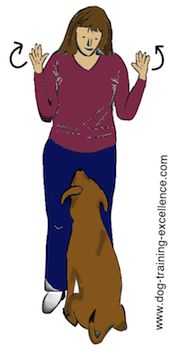Sign Stimulus In Dogs

Begin decreasing distance in small increments moving the dog closer to the stimulus consistently obtaining the desired cer from the dog at each new distance.
Sign stimulus in dogs. In pavlov s famous experiment with dogs the conditioned stimulus is the bell. Signs of arousal and alertness in dogs by dogtime a dog who is offering the cues below as demonstrated by our handsome dog in the photo is telling you that he is focused on something. Some of the more common presentations include the following.
Scientifically that phenomenon is called stimulus generalization. 2 fear of unfamiliar people especially those who are novel or look act or smell different than those the dog is accustomed to eg young children. A dog who jumped at the sound of a heavy box falling to the floor can become frightened by other sudden noises down the road.
The clinical signs will vary depending on the severity of the fear or anxiety that the dog is suffering from. When your dog is happy to have the higher intensity stimulus close to him he s ready for the final phase. In this lesson you.
3 fear of inanimate stimuli such as loud or unfamiliar noises eg construction work trucks gunshot visual stimuli eg umbrellas. The neutral stimulus that now produces the reflex response is known as a conditioned stimulus. Stimulus generalization is one of the possible outcomes of classical and operant conditioning.
Clinical signs of dog anxiety and fear. There s no need though to become a dog trainer to understand stimulus control as it can ultimately apply to many many things in life we do. Conditional means that learning is necessary for the stimulus to cause the response.
Indeed most of the scientific terms used in dog training are the same used for explaining the learning process of humans. Sign stimuli are often found when observing a fixed action pattern fap that is an innate behavior with very little variance in the manner in which the actions are executed. Signs may include trembling tail tucking hiding reduced activity and passive escape behaviors.


















